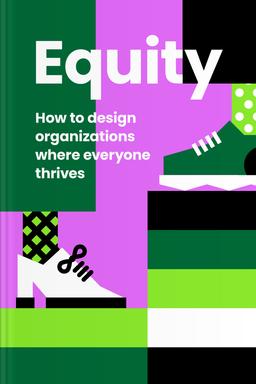You’ll learn
- How leadership fosters equity
- What makes equity essential
- About the way bias shapes behavior
- What defines human-centered design
russia has launched a full-scale war in Ukraine. Donate to support Ukraine and protect the world’s peace.

first KEY POINT
While the terms “equity” and “equality” seem similar, their implementation may have quite different effects on people.Equality implies that everyone has the same resources or opportunities, while equity acknowledges that everyone's situation is unique and provides resources and opportunities accordingly.Equity gives the capacity to grow and contribute fully to the lives of others. It embraces and makes use of diversity; it does not condemn it. When fair attitudes, procedures, and organizations are in place in any system, everyone has an equal opportunity for success. In other words, equity is the concept of everyone having a fair opportunity to do meaningful jobs, live honestly, and contribute positively to society, an organization, or their culture.
Equity recognizes our interconnectedness and capitalizes on our collective ability to promote a culture of development and service to society. It also relieves us of the pressure of constantly questioning the status quo by making it easier to embrace methods that are mutually supportive in their application. Creating a system that prioritizes women's needs, for example, makes it reasonable and natural for women to take the reins of their lives.Equity is the most accurate expression of our shared human nature; it is a virtue that raises our true self above the mundane. In trying to create an equitable world, we can see the power of racial and systemic privileges and why some people are unwilling to be equal to others. By creating an equitable world, we build systems that function for everyone.This tidbit is a quick and fun read that is helpful to leaders who want to make their workplaces more inclusive by using the outlined human-centered designs and behavior change guidelines.
second KEY POINT
Instead of concentrating only on personal development, corporate institutions should facilitate everyone’s desire to do the right thing. To make the workplace more inclusive, leaders or managers need to inquire about new workers' religious or cultural holidays and ensure they have time off on certain days.

Continue reading with Headway app
Continue readingfirst KEY POINT
second KEY POINT
third KEY POINT
fourth KEY POINT
fifth KEY POINT